#as400 migration services
Explore tagged Tumblr posts
Text
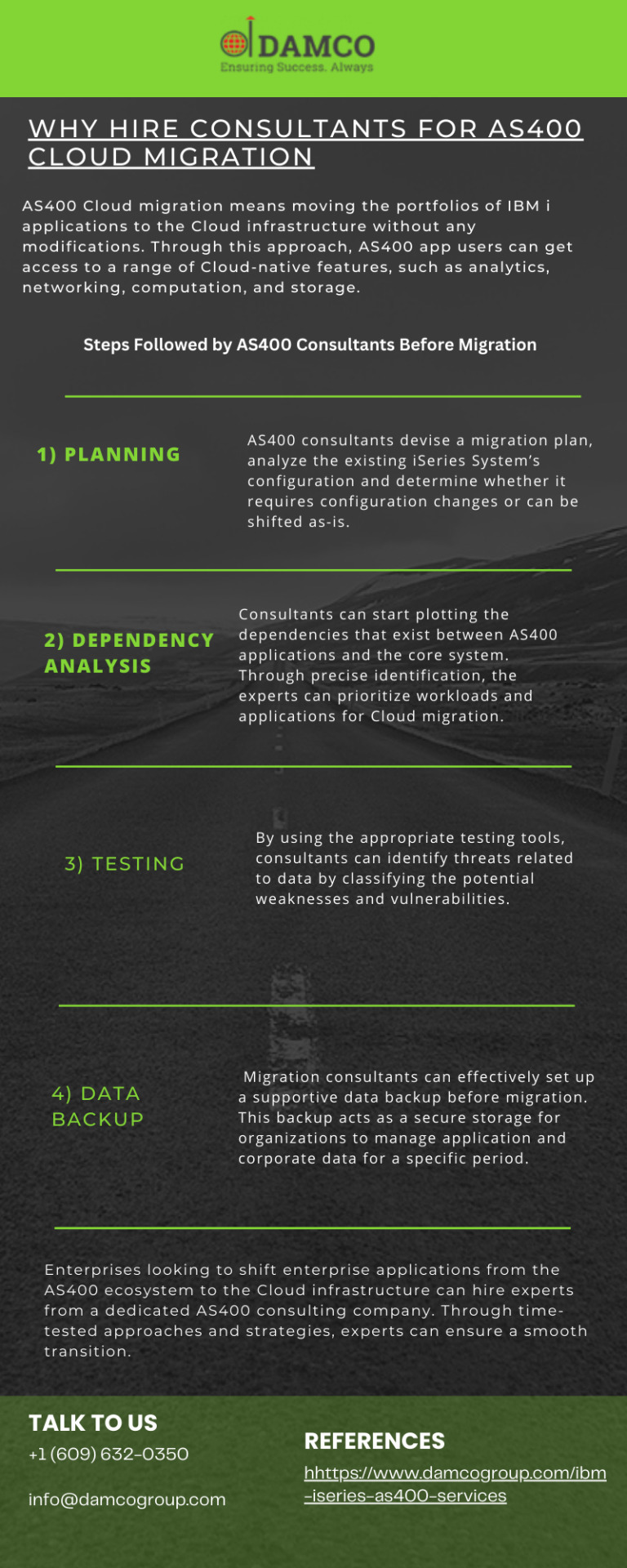
Unlock AS400 Potential with migration Services
Migrate your AS400 systems to unlock their full potential. Our expert team provides comprehensive services to upgrade and integrate your legacy systems with modern technologies. From improving user interfaces to enhancing security measures, we help streamline operations and reduce maintenance costs. Elevate your AS400 Migration Services environment to meet today’s business demands while preparing for future growth.
For more info:- https://www.damcogroup.com/ibmiseries-as400-migration
0 notes
Text
Migrate AS400 Applications to Azure Strategically with IBM i Consultants

Want to host your AS400 application in an enterprise-grade cloud environment? If yes, hiring dedicated AS400 migration experts is the right choice. These experts meticulously migrate AS400 applications to the Azure cloud without any disruptions. Some of the key migration strategies that experts follow include lift and shift, re-platforming, and refactoring.
Read more:- https://techplanet.today/post/as400-migration-to-azure-key-challenges-and-practices-to-consider
0 notes
Text
#as400 cloud providers#as400 cloud solutions#as400 cloud migration solutions#as400 cloud service provider
0 notes
Text
Ibmi Iseries/AS400 Services | AS400 Software Solutions
#as400 support#as400 migration#as400 gui#as400 services#as400 modernization#as400 backup#as400 cloud#as400 service#ibm as400 system#as400 security#as400 system#as400 systems
0 notes
Text
Modernize your IBM i/AS400 systems with our cutting-edge AS400 modernization solutions, designed to meet the evolving needs of today’s businesses. We specialize in transforming legacy systems into scalable, efficient, and user-friendly platforms. Our services include converting outdated RPG code to modern free-format RPG, enhancing UI/UX with web-based designs, and integrating your AS400 systems with cloud platforms and third-party applications. Additionally, we offer performance optimization to handle high-demand workloads and seamless data migration to the latest IBM i versions with minimal disruption. With our IBM i modernization expertise, we ensure your systems are equipped to support innovation and maintain a competitive edge. Retain the reliability of your trusted IBM i platform while unlocking its full potential. Partner with us to future-proof your enterprise and drive innovation with expert AS400 modernization services. Contact us today to learn more
#AS400 Modernization#AS400 Modernization Services#IBMi Modernization Services#AS400 Modernization Solutions
0 notes
Text
Why AS400 iSeries (AS/400, IBM i) is Still in Demand in 2023?
Over 100,000 businesses utilise IBMi to power their mission-critical, durable, computing-intensive applications, according to information provided by IBM. Businesses that use the iSeries platform are categorised into verticals that range from manufacturing to distribution and retail to the financial industry. Abellasys has a proven expertise of over 20+ years working with IBMi AS400 systems. And, with a promise of success, we have the following AS400 application development services to offer you: * AS400 Modernization Services * AS400 Development * AS400 Administration Services * AS400 Consulting * AS400 RPG Developer * AS400 Integration & Migration Services
#AS400 Integration & Migration Services#as400 development company#ibm iseries as400#as400#AS400 RPG Developer#as400 operating systems#as400 software#as400 system#technology
0 notes
Text
Actual Odbc Driver

Troubleshooting
Mysql Odbc Driver Contact Php Software Listing (Page2). About Actual ODBC Driver for OpenBase Now you can access data from your OpenBase database using Microsoft Exceland FileMaker Pro. MySQL Connector/ODBC project is an ODBC driver for the MySQL database server.
Actual ODBC Driver for Access v.1.6 With the ODBC driver for Access, you can connect to Microsoft Access databases and import data directly into an Excel spreadsheet or a FileMaker database. There is no need for an intermediary Windows PC - this driver reads data from the database file.
Actual ODBC for Apple Silicon! Version 5.1 of the Actual ODBC Pack is now compatible with native Apple Silicon apps and MacOS Big Sur. Intel Macs and Rosetta are also supported. The Actual ODBC Pack installer is available from our website. How to Obtain Actual Technologies ODBC drivers allows Mac OS X users connect to enterprise databases using common desktop applications such as Microsoft Excel and FileMaker Pro. Create pivot tables, charts, and graphs from an Excel database via Microsoft's built-in support for ODBC queries. ODBC drivers support the Amazon Relational Database Service (RDS), making it easy to configure a cloud.
Problem
In V5R2 of iSeries Access for Windows V5R2 the ODBC driver's registered name has been changed to 'iSeries Access ODBC Driver'. This name change may impact some applications.
Resolving The Problem
Users of V5R2 iSeries Access for Windows may notice that the following ODBC driver names are registered: 'Client Access ODBC Driver (32-bit)' 'iSeries Access ODBC Driver' Both names represent the same driver. There is no functional difference between them. The Client Access ODBC Driver name is still registered to allow applications that use existing datasources (DSNs) or DSN-less connections to run without requiring changes. The preferred method for creating new datasources is to use the 'iSeries Access ODBC Driver' name; however, this is not required. Selecting either driver name creates a DSN with the new 'iSeries Access ODBC Driver' name. Existing ODBC User and System datasources (DSNs) that were created with Client Access are migrated automatically the first time the DSN is used. No action by the user is required. File DSNs are not migrated (even if edited). Although they can be used with V5R2 iSeries Access, future versions of iSeries Access may not support the old driver name. All File DSNs should be deleted and re-created. This information is also described in the Addendum to V5R2 readme.txt available on the iSeries Access Web site and in the OS/400 V5R2 Memorandum to Users. Programming Notes The older 'Client Access ODBC Driver (32-bit)' name is deprecated. Applications written to use DSN-less connections (the SQLDriverConnect API and the DRIVER connect string keyword) should be updated to use the 'iSeries Access ODBC Driver' name. A future version of iSeries Access will no longer register the Client Access driver name causing these applications to fail if they are not updated. This is described in the 'Addendum to V5R2 readme.txt': 'Be aware that in a future release, the former name of 'Client Access ODBC Driver (32-bit)' will be removed. If you use an application that uses a File DSN or DSN-less connection (one that specifies the DRIVER connection string keyword when connecting) you should consider changing your application to use the new name 'iSeries Access ODBC Driver'. Uninstall Notes If iSeries Access for Windows is removed, existing datasources are not changed. If an older version of Client Access is then installed, any datasources migrated to iSeries Access for Windows will fail to connect (see Note). The new or migrated datasources must be deleted and re-created or the cwbODBCreg tool can be used to restore the older 'Client Access ODBC Driver (32-bit)' name. The cwbODBCreg utility is included in V5R2 and is also available at ftp://ftp.software.ibm.com/as400/products/clientaccess/win32/files/odbc_tool/. To convert all datasources to V5R1 and earlier, run the tool with the following options: cwbODBCreg -name V5R1. Note: With the current version of the Microsoft driver manager, a failure will occur only if the DRIVER path and the ODBC Data Sources name are not correct. V5R2 iSeries Access alters both. In addition to the name change, the DRIVER path moved to the Windows system directory. This was done to enable future support for 64-bit versions of Windows. Because both values changed, most users encounter the error if they uninstall and restore a previous release. The unistall information is also described in the V5R2 Memorandum to Users.
(('Type':'MASTER','Line of Business':('code':'LOB08','label':'Cognitive Systems'),'Business Unit':('code':'BU054','label':'Systems w/TPS'),'Product':('code':'SWG60','label':'IBM i'),'Platform':(('code':'PF012','label':'IBM i')),'Version':'6.1.0'))
Document Information
Modified date: 18 December 2019
Display by: Relevance | Downloads | Name
Released: August 10, 2012 | Added: August 10, 2012 | Visits: 457
About Actual ODBC Driver for OpenBaseNow you can access data from your OpenBase database using Microsoft Exceland FileMaker Pro. With the Actual ODBC Driver for OpenBase, you can connect quickly and easily to your database. Unlike other solutions, this driver installs completely on your Mac -...
Platforms: Mac
License: DemoCost: $0.00 USDSize: 1.6 MBDownload (37): Actual ODBC Driver for OpenBase 1.3 Download
Added: November 15, 2010 | Visits: 1.760
MySQL Connector/ODBC project is an ODBC driver for the MySQL database server. MySQL is a multithreaded, multi-user SQL database management system (DBMS) which has, according to MySQL AB, more than 10 million installations. MySQL is owned and sponsored by a single for-profit firm, the Swedish...
Platforms: *nix
License: FreewareDownload (365): MySQL Connector/ODBC Download
Added: May 20, 2010 | Visits: 1.193
The OOB Client is an ODBC driver which communicates with the OOB Server. The OOB Server connects to an existing ODBC driver on the server machine. It does not need to be installed on the database server. The OOB is normally used to provide access to an ODBC driver you cannot obtain for the... Platforms: *nix
License: SharewareCost: $0.00 USDDownload (128): Easysoft ODBC-ODBC Bridge Download
Added: January 26, 2010 | Visits: 923
DBD::ODBC Perl module contains a ODBC Driver for DBI. SYNOPSIS use DBI; $dbh = DBI->connect(dbi:ODBC:DSN, user, password); Private DBD::ODBC Attributes odbc_more_results (applies to statement handle only!) Use this attribute to determine if there are more result sets available. SQL... Platforms: *nix
License: FreewareSize: 122.88 KBDownload (88): DBD::ODBC Download
Actual Odbc Driver
Added: August 09, 2010 | Visits: 896
MySQL Abstractor package contains PHP classes that implements a MySQL database abstraction layer. It provides several classes. There is one for establishing connections and executing SQL queries, another for composing and executing SELECT, INSERT, UPDATE and DELETE queries from a list of... Platforms: *nix
License: FreewareDownload (87): MySQL Abstractor Download
Added: January 25, 2010 | Visits: 1.008
The OpenLink ODBC Driver for Oracle (Express Edition) is a single component installed on a machine hosting ODBC compliant applications such as Microsoft Excel, 4th Dimension, Omnis Studio, DB Visualizer, DB Designer, etc. The OpenLink ODBC Driver for Oracle (Express Edition) is a multi-threaded... Platforms: Mac
Odbc Driver Install
License: DemoCost: $0.00 USDSize: 5.2 MBDownload (100): OpenLink ODBC Driver for Oracle Download
Released: September 14, 2012 | Added: September 14, 2012 | Visits: 900
RISE PHP for MySQL code generator The RISE PHP for MySQL code generator renders PHP source code for database access. The generated code implements the classes and methods corresponding to the information interfaces specified in the RISE model. This includes classes for database access and,... Platforms: Windows
License: FreewareDownload (46): RISE PHP for MySQL code generator Download
Added: May 13, 2013 | Visits: 700
PHP Tree Structure stored in MySQL database is a php script to store and manipulate tree structure in a mysql database, is a free PHP code generator.An example of a typical uses for this would be a web directory. Its important to note that the script and the table are meant only to... Platforms: PHP
License: FreewareSize: 10 KBDownload (30): PHP Tree Structure stored in MySQL database Download
Added: May 06, 2013 | Visits: 566
PHP MySQL databaser is a PHP script that can access and manipulate MySQL databases.Using PHP MySQL databaser can support connecting to a given MySQL database, running queries, executing INSERT queries from the given parameters, retrieving the list of tables, creating and dropping table. Platforms: PHP
License: FreewareSize: 10 KBDownload (29): PHP MySQL databaser Download
Added: March 04, 2010 | Visits: 1.188
Remote MySQL Query is a PHP class that can easily execute queries on a remote MySQL server using only HTTP. It works by accessing a PHP script on the remote web server that executes queries based on passed in URL parameters. The client passes a secret key to the remote script to prevent... Platforms: *nix
License: FreewareDownload (129): Remote MySQL Query Download
Added: January 25, 2010 | Visits: 692
High-Performance ODBC Drivers provide transparent access to remote databases from any ODBC-compliant application. Desktop Productivity Tools (i.e., Spreadsheets, Word Processors, Presentation Packages, Desktop Databases, Personal Organizers, etc.), Client-Server Application Development... Platforms: Mac
License: DemoCost: $0.00 USDSize: 2.4 MBDownload (87): OpenLink Lite ODBC Driver for MySQL 4.x Download
Added: January 25, 2010 | Visits: 673
High-Performance ODBC Drivers provide transparent access to remote databases from any ODBC-compliant application. Desktop Productivity Tools (i.e., Spreadsheets, Word Processors, Presentation Packages, Desktop Databases, Personal Organizers, etc.), Client-Server Application Development... Platforms: Mac
License: DemoCost: $0.00 USDSize: 2.4 MBDownload (91): OpenLink Lite ODBC Driver for MySQL 5.x Download
Added: January 25, 2010 | Visits: 629
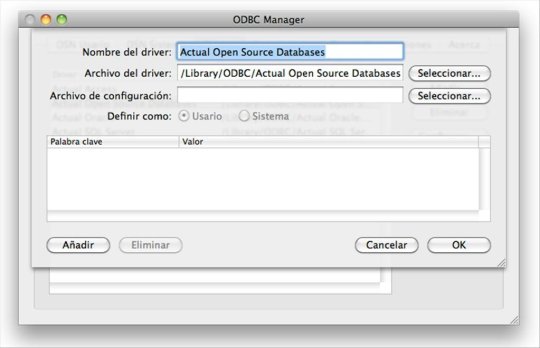
High-Performance ODBC Drivers provide transparent access to remote databases from any ODBC-compliant application. Desktop Productivity Tools (i.e., Spreadsheets, Word Processors, Presentation Packages, Desktop Databases, Personal Organizers, etc.), Client-Server Application Development... Platforms: Mac
License: DemoCost: $0.00 USDSize: 2.4 MBDownload (87): OpenLink Lite ODBC Driver for MySQL 3.x Download
Added: May 10, 2013 | Visits: 570
Remote MySql Manager is a PHP code to manage a MySql database over the web. It allows you to Add/Drop databases and tables, Insert/Update/Delete records, Enter your own SQL query, Import text files into a table, Export tables as plain text. You do not need configuration files or installation... Platforms: Windows, Mac, *nix, PHP, BSD Solaris
License: FreewareDownload (38): Remote MySql Manager Download
Added: August 15, 2008 | Visits: 3.660
Do a conversion from Excel to MySQL or MySQL to Excel free of MySQL query knowledge. This converter uses Excel as a front end to your MySQL database. The MySQL ODBC driver is used. Results can be seen and modified with popular MySQL php admin tools. Platforms: Windows
License: SharewareCost: $9.82 USDSize: 5.7 MBDownload (373): Excel to MySQL Import Download
Added: April 06, 2013 | Visits: 349
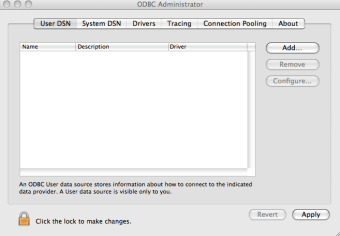
MySql DbBackup is a PHP script that will backup your local/remote MySql DB using mysqldump.Features : Backup rotation, bzip2/gzip compression, gpg encryption, FTP file sending, Email file sending, Email repporting, log... and a lot of options to configure it. Platforms: PHP
License: FreewareSize: 10 KBDownload (27): MySql DbBackup for Scripts Download
Actual Odbc Driver Update
Added: May 12, 2013 | Visits: 408
mySQL/HTML-Client is a Web interface to a mySQL database written in PHP. It allows you to display and query database. Platforms: PHP
License: FreewareSize: 40.96 KBDownload (28): MySQL/HTML-Client Download
Added: August 05, 2008 | Visits: 1.564
AnySQL Maestro is a unique FREEWARE for administering any database engine (SQL Server, Oracle, MySQL, MS Access, etc.) which is accessible via ODBC driver or OLE DB provider.The application provides you with easy-to-use GUI, which allows you to perform common database operations easy and fast.... Platforms: Windows
License: FreewareSize: 11.6 KBDownload (192): AnySQL Maestro Download
High-Performance ODBC Drivers provide transparent access to remote databases from any ODBC-compliant application. Desktop Productivity Tools (i.e., Spreadsheets, Word Processors, Presentation Packages, Desktop Databases, Personal Organizers, etc.), Client-Server Application Development... Platforms: Mac
License: DemoCost: $0.00 USDSize: 2.4 MBDownload (90): OpenLink Lite ODBC Driver for PostgreSQL Download
Actual Odbc Sql Server Driver For Mac
High-Performance ODBC Drivers provide transparent access to remote databases from any ODBC-compliant application. Desktop Productivity Tools (i.e., Spreadsheets, Word Processors, Presentation Packages, Desktop Databases, Personal Organizers, etc.), Client-Server Application Development... Platforms: Mac
License: DemoCost: $0.00 USDSize: 2.4 MBDownload (86): OpenLink Lite ODBC Driver for SQL Server (TDS) Download

0 notes
Photo
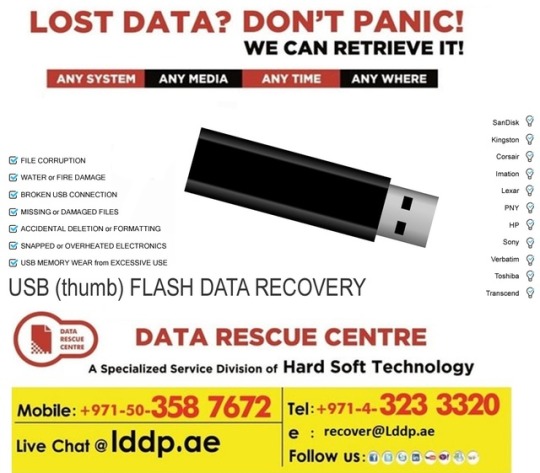
Need To Get Your Data Recovered? At Data Rescue Center Dubai, we have the skills to recover your personal data from all kinds of data storage devices.
📱 To Avail Services in Box your Details | Call | What’s App on +971503587672📱
Not only that, but our recovery center is conveniently located in Dubai. We can recover deleted files from flash drives, thumb drives, external USB drives, hard drives/hard disks, RAID systems and Apple / Mac devices. Regardless of the storage capacity, or the size of the device, you can depend on us to recover lost files and take care of your storage needs quickly and efficiently
#Hard Drive Recovery, #Mobile Data Recovery #Android Data Recovery, #iPhone Data Recovery #USB Flash Recovery, #Memory Card Recovery #SD Card Data Recovery, #CFast Data Recovery #Apple Data Recovery, #External Drive Recovery #Desktop Data Recovery, #Laptop Data Recovery #Encrypted Data Recovery, #QuickBooks Recovery #SSD Data Recovery, #RAID Data Recovery #UNIX Data Recovery, #MySQL Data Recovery #Oracle ASM Recovery, #Microsoft SQL Recovery #QNAP Data Recovery, #Drobo NAS Recovery #NetGear , #NAS Recovery, #NetApp Data Recovery #Synology Data Recovery, #Tape Data Recovery #Tape Migration, #Tape E-Discovery, #AS400 Data Recovery, #MS Hyper-V Recovery, #Dell EqualLogic Recovery, #Dell Server Recovery, #HitachiDataSystems Recovery, #Citrix XenServer Recovery, #HP StorageWorks Recovery, #HP ProLiant Recovery #VMFS VMware Recovery, #HP LeftHand Recovery #EMC SAN Recovery, #IBM Server Recovery.
With free analysis and diagnosis, No Recovery - No Charge policy we guaranteed best value nationwide!
0 notes
Text
JD Edwards Software and Implementation Services
As a president of an ERP consulting Services Company specialized in J.D. Edwards implementation, I had the chance to meet a lot of people who were bragging to be good JDE developer. The real life prove me that most of the time, people were lying. In fact, this is a great deal to find a real professional in this area. As a former trainer for Jd Edwards Montreal, I had the chance to teach to different people with different background and I can assure you that the most dangerous resources are the one that know how to do development in any other languages than an ERP one. J.D. Edwards developer learning curve is impressive. In order to become a good junior developer in JDE, you need at least three or four years of experiences....Otherwise... are you searching JD Edwards Service Provider?

In my past ERP trainings, I explained the phases that a developer needs to apply in order to have the capacity to become one of the Pros in is industry...instead of being a Charlatan. The first point, for me, is the most important. "Integrity and Honesty". Please, say the truth. This is a new time and what if...I can propose a NEW WAY to do JDE technical consulting? Before creating my own company, I worked for a very high reputation firm in Montreal. Unfortunately, I was not involved in the hiring process but I was in charge of the development team. The bottom line was that in rush time, the so called JDE developers that were assign on my team were not good. They were able to full the HR hiring process with their level of experiences with OTHER languages and each time, they were not able to do the job. As a team leader, I was the one who was talking to the client and making specs for the team. It was so obvious to feel the lack of expertise in my new arrivals when I was explaining the work to accomplish. Absolutely everything can be done with the JDE development tools. If someone tried to propose something outside JDE, be on your guard. In fact, this is a small example of what can destroy a win-win situation between a client and his consulting services. Are you looking JDE Implementation Services?
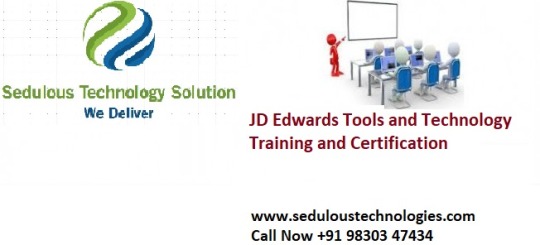
Having a high level of Integrity and Honesty should be the only way to do business. It will bring a win-win situation and the client will always turn to you when he will need high quality services for his need...NOT more. Here some successful point to remember about Integrity and Honesty in a B2B deal:
1. Win-Win situation
2. Confidence between partners
3. Reliability
4. Truth on the real needs...
5. Respect
6. Loyalty
7. Credibility
8. Success
9. Durability
A NEW WAY to do business, the only way. Find these qualities with your staff or your consulting services and you will add tremendous value to your enterprise.
JD Edwards Implementation | JD Edwards Implementation Services | JD Edwards Service Provider | JDE Implementation | JDE Implementation Services | JDE Service Provider | JD Edwards Software and Implementation Services | JD Edwards Tools and Technology Training | JD Edwards Training | JDE Training | jd edwards training in india | JD Edwards Training for Corporate
jd edwards training for individuals | Online JDE Training | JD Edwards EnterpriseOne Training and Certification | Oracle JD Edwards Enterprise | jd edwards support | JDE support | jd edwards maintenance | JD Edwards Software Support & Maintenance | jd edwards migration service providers | JDE Migration Service Provider | JD Edwards EnterpriseOne Installation and Upgrade | documentation | IT Staff Subcontracting | JDE installation | jd edwards help | Staff Augmentation | Staff Augmentation Service Provider | JDE outsourcing Partner | JD Edwards outsourcing Partner | jde migration service providers | jd edwards software support maintenance
jd edwards manual pdf | jd edwards training manual pdf | jd edwards tutorial | jd edwards oneworld xe documentation | jd edwards technical | jd edwards programming language | jd edwards enterpriseone accounts payable 9.0 implementation guide | jd edwards as400 tutorial | jde notes | how to use jde | jde architecture | jde as400 | jd edwards training fees | jd edwards certification cost | jde functional training | jd edwards cnc training | jd edwards training in chennai | jd edwards training in delhi | jd edwards training in hyderabad | jd edwards business services training | jd edwards training in pune | jd edwards modules | jde training hyderabad | jd edwards | jde 9.2 cnc certification | jd edwards training in bangalore | jd edwards certification | jd edwards quora | jd edwards future scope | learn jd edwards free | jd edwards developer training | jd edwards tutorials free | jde 9.2 certification
jde orchestrator training | jd edwards enterpriseone training and certifications | jd edwards enterpriseone training and certified implementation specialist | jd edwards technical training | jd edwards online training | jd edwards login | jd edwards wiki | jd edwards accounting software | jd edwards vs sap | jde meaning | jd edwards logo | oracle support | what is jd edwards used for jd edwards careers | oracle jd edwards help | jd edwards saas | describe how to install jd edwards enterpriseone in the oracle cloud | jd edwards lift and shift | jde 9.2 installation guide | jde upgrade documentation | jd edwards enterpriseone development client installation guide | jd edwards enterpriseone installation and upgrade guides | jd edwards user manual | jde enterprise one manual | subcontractor | types of subcontractors | subcontractor vs contractor | using subcontractors | subcontractor laws | requirements when hiring subcontractor | benefits of subcontracting | subcontracting work | install jdk | the command failed with error 1 jde | otube oracle | demo oracle edelivery oracle com osdc faces softwaredelivery | oracle sign in page | jd edwards tutorial for beginners | jd edwards enterpriseone 9.2 user guide | jd edwards enterpriseone the complete reference pdf
how to use jd edwards enterpriseone applications | jd edwards 9.2 training manual pdf | jd edwards customer self service | jd edwards enterpriseone tools orchestrator guide | benefits of staff augmentation | staff augmentation companies in india | staff augmentation process flow | staff augmentation synonym | software development staff augmentation | staff augmentation example | staff augmentation laws | staff augmentation contract example | staff augmentation services | staff augmentation ppt | staff augmentation companies in hyderabad | staff augmentation meaning in hindi | staff augmentation market size | staff augmentation companies in bangalore | staff augmentation best practices
#JD Edwards Implementation#JD Edwards Implementation Services#JD Edwards Service Provider#JDE Implementation#JDE Implementation Services#JDE Service Provider#JD Edwards Software and Implementation Services#JD Edwards Tools and Technology Training#JD Edwards Training#JDE Training#jd edwards training in india#JD Edwards Training for Corporate#jd edwards training for individuals#Online JDE Training#JD Edwards EnterpriseOne Training and Certification#Oracle JD Edwards Enterprise#jd edwards support#JDE support
0 notes
Photo

How to migrate IBM i AS400 Applications to Windows, UNIX or Linux?
Introduction
Organizations have made large investments in the development of legacy systems along with resources and infrastructure to ensure business continuity. Over time, this maintenance tends to get more complex as data evolves while technology and client demands exceed it.
In response custom applications were built, however, these remain short-term solutions. There is a need to move to more agile applications as the current technology slowly becomes obsolete.
This also involves keeping the larger picture in minds such as reusability and economic feasibility.
A decision to migrate applications to open growth platforms or hardy operating environments including Linux, UNIX and Windows is spurred by the goal to help clients and their customers meet the required market needs.
These developments have been largely possible with the rapid pace in technological growth. So it is only natural that with an evolving maturity of the marketplace, companies will also consider leveraging these benefits.

Organizations logically prefer to run their AS400 applications on these faster, dependable, open growth platforms rather than using the operating system of AS400. The migration of RPG applications to IBM’s i platform is also another solution. Migration requires the support of tools such as Infinite i, developed by Infinite Corporation, including many other organizations that employ modernization platforms such as ASNA, LANSA, MuleSoft, Unibol, Infinite, BCD and G&G, along with the expertise of IT professionals.
Migrating AS400 Applications to Open Growth Environments
A few obvious indicators that shout out that it is time for a migration is the higher lifecycle maintenance costs, slower performance of the application, declining health of the current platform along with technical aging.
Starting from 1993, G&G’s development, modernization, and data integration products, solutions have evolved with IBM as it transitioned from (originally) System-38 to AS400 to iSeries to System i, to IBM i.
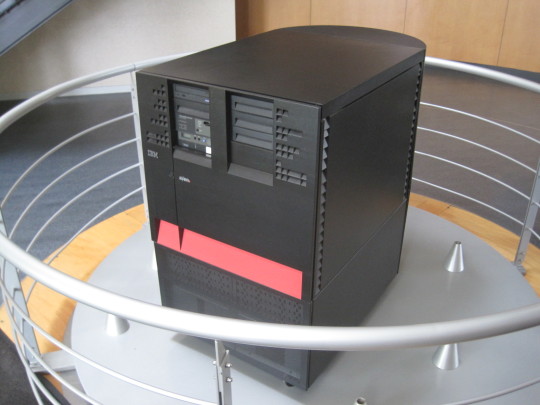
Many of the AS400 / IBM i migration and modernization platforms are a bundle of compilers, operating system services, and utilities that enable the migration of AS400 environment along with the databases at the target source level code. This code block is recompiled and executed in the target operating environment such as Windows, UNIX or Linux. These compilers also comprise RPG/400, RPG ILE, COBOL, COBOL ILE, DDS and CL which recompile the AS400 COBOL and RPG source code in the native object code for 64-bit Red Hat Linux, AIX, HP-UX for Itanium, Windows Enterprise Server, to name a few.

Some of these platforms are preferred because of their ease of use, cost-effective migrating capabilities, and fast deployment that cashes on time. Further, if the business is looking to secure its investment by working with IBM-i’s midrange applications and associated resources, then similar platforms can be considered. So along with investment in the legacy code and infrastructure, the support also covers the newer business models in the business landscape.
0 notes
Text
Accelerate AS400 Database Migration to Cloud with ETL Tools
ETL Extract Transform Load tools play a crucial role in speeding up the DB2 AS400 migration to cloud. These tools automate the process of extracting datasets from AS400 databases, reformatting and loading them into the cloud environments without any manual intervention. By reading this guide, tech leaders and administrators can understand the significance and benefits of migrating AS400 databases to the cloud using ETL tools.
Read more:- https://thelatesttechnews.com/computer-technology/software/simplify-as400-database-migration-to-cloud-with-automated-etl-tools/
0 notes
Text
Revive Legacy IBM i Applications with Cloud Migration

The article discusses the benefits of using AS400 Migration Services to move legacy IBM i applications to the cloud. It highlights how cloud migration can enhance the scalability, flexibility, and performance of these applications, ensuring they meet modern business demands. The process involves rehosting, replatforming, and refactoring applications to leverage cloud infrastructure effectively. By utilizing AS400 Migration Services, organizations can extend the life of their legacy systems while gaining improved security, reduced operational costs, and greater agility in adapting to changing market conditions. Read More: https://www.damcogroup.com/blogs/revive-legacy-ibm-i-applications-with-cloud-migration.
0 notes
Text
0 notes
Text
8 Ecommerce ERP Integration Patterns & Data Orchestration Frameworks
ERPs reduce a business’s risk in uncertain circumstances and are perceived to have a positive impact on organization performance, including the improvement of productivity and profitability.
ERPs are the lifeblood of large retail operations. There are serious financial and non-financial boosts to a company who can organize itself around an ERP.
Historically, however, in order to properly organize and orchestrate ERP data flow, customer-facing tool options have been limited.
This is because ERPs rely heavily on EDI and APIs to sync with outside systems.
EDI is the more traditional approach and still often used in B2B and wholesale channels, and Walmart specifically.
APIs are the more modern approach, and used by SaaS services and tools that enable marketing teams to move quickly, while ensuring proper data orchestration is not disrupted.
Steve Deckert, Co-Founder, Smile.io
ERPs are essential in allowing retailers to offer multichannel experiences to their customers.
They allow the retailer to have a single, comprehensive view of their customers, orders, inventory, etc. The alternative is to have a disjointed understanding of your channels which results in a disjointed customer experience – and lower revenue.
The API Economy & Innovation as the Crux for Future-Proofing
Cloud and thus SaaS platform APIs vary based on platform. Call limits are important considerations for brands looking to integrate with a SaaS solution.
Nonetheless, nearly all SaaS solutions have APIs, and with the rising tide shift from on-premise and custom built technology to cloud solutions (which decrease tech debt and speed up GTM), the API Economy has taken off.
The benefits of SaaS integration, specifically for the ecommerce channel, are huge.
As Amazon continues to own the commodity market and 55% of U.S. consumer product searches, and micro-brands begin to disrupt their legacy competitors, innovation and speed to market have become table stakes in the retail industry.
Innovation has historically been seen as the final step to realizing ERP benefits – but too few brands have gotten to that step, and fewer still have been able to innovate as effectively as Amazon or the litany of rising micro-brands.
Once scalable and quick innovation GTM can be met for specific channels – in this case ecommerce – even more can be automated and then forecasted for better business decisions and increased time and capital resources.
SaaS solutions like BigCommerce enable innovation on the cloud, while providing unlimited API call volumes syncing data in near real time.
This is the typical BigCommerce framework for retailers with existing ERPs:
Of course, the ecommerce platform is only a cog in the machine of complete data orchestration for retailers.
And, there are a variety of ERP framework theories and options based on a retailer’s needs and priorities.
That’s why BigCommerce partnered up with eBridge Connections, a systems integrator, to depict the most common ecommerce ERP data orchestration frameworks as built out for large retailers using a variety of ERPs, including:
IBM AS/400
SAGE
SAP
EPICOR
Microsoft Dynamics
Netsuite
Acumatica
Brightpearl
info
INTACCT
SYSPRO
Traverse
First, let’s look at the 5 most common ERP integration patterns.
Want more insights like this?
We’re on a mission to provide businesses like yours marketing and sales tips, tricks and industry leading knowledge to build the next house-hold name brand. Don’t miss a post. Sign up for our weekly newsletter.
5 Most Common ERP Integration Patterns
Modern retailers require modern data management and orchestration. For many organizations, an ERP fulfills this need.
ERPs can automate processes, enable planning and forecasting, and ultimately enable innovation by giving teams across an organization the ability to access and leverage the most up-to-date customer, product and accounting information in order to streamline business processes and create the most effective services and solutions.
In order for it to happen, businesses need to develop an ERP integration strategy to make sure it connects with the necessary enterprise systems. In other words, data orchestration is required.
When considering the variety of ERP integration needs, common patterns emerge. Patterns, as denoted below, are the most logical sequence of steps to solve a specific type of ERP problem, and are established from actual use cases.
The most common ERP integration patterns are:
Migration.
Broadcast.
Aggregation.
Bi-directional synchronization.
Correlation.
Jordan Brannon, President, Coalition Technologies
ERPs operate as a hub and collaboration center for various business functions and department.
A well integrated and accessible ERP allows each business unit to access much needed information and data, and can help tear down silos within an organization that can lead to costly mistakes or missed opportunities.
1. Migration ERP Integration.
Data migration ERP integration is moving a specific set of data at a particular point in time from one system to another.
A migration pattern allows developers to build automated migration services that create functionality to be shared across numerous teams in an organization.
Developers can set the configuration parameters to pass into the API calls so that the migration can dynamically migrate scoped ecommerce data in or out of the ecommerce SaaS platform (like BigCommerce) either on command or on an as-needed basis via an API.
2. The Broadcast Pattern.
The broadcast ERP integration pattern moves data from a single source system to multiple destination systems in an ongoing, near real-time, or real-time basis.
This a one-way synchronization from one to many. Typically “one-way sync” implies a 1:1 relationship; the broadcast pattern creates a 1:many relationships.
Broadcast patterns keep data up-to-date between multiple systems across time and allows for the immediate transfer of data between systems.
For instance, broadcast patterns update inventory levels across omnichannel sales touch points including marketplaces, brick and mortar stores, your branded website and wholesale partners.
3. The Aggregation Pattern.
The aggregation ERP pattern takes or receives data from multiple systems and copies or moves it into just one system.
Aggregation removes the need to run multiple migrations on a regular basis, removing concerns about data accuracy and synchronization. It is the simplest way to extract and process data from multiple systems into a single application or report.
The aggregation ERP pattern enables the extraction and processing of data from multiple systems and merging them into one application.
This ensures that data:
Is always up to date
Does not get replicated
Can be processed or merged to produce any desired dataset or report.
4. The Bi-Directional Sync Pattern.
Bi-directional sync ERP integration patterns unite multiple datasets in multiple different systems, causing them to behave as one system while allowing them to recognize the existence of different datasets.
This type of integration comes in handy when different tools or different systems, which are needed for their own specific purposes, must accomplish different functions in the same data set.
Using bi-directional sync enables both systems to be used and maintains a consistent real-time view of the data across systems.
Bi-directional sync integration enables the systems to perform optimally while maintaining data integrity across both synchronized systems.
5. The Correlation Pattern.
Correlation and bi-directional sync ERP integration patterns are very similar but there is one important difference:
The correlation pattern singles out the intersection of two data sets and does a bi-directional synchronization of that scoped dataset, but only if that item occurs in both systems naturally.
Bi-directional synchronization will create new records if they are found in one system and not the other.
The correlation pattern will synchronize objects as long as they are found in both systems.
Dave Malda, Sales Manager, eBridge Connections
The truth is that without a rock-solid ERP, big brands selling online can’t keep up with Finance + Operational data and processes. Especially as they grow and sell across multiple channels.
Keep in mind too that ERPs are not one-size-fits-all. At eBridge, our customers usually figure out their business priorities, and then back into the right ERP for their biz before they come to us for eCommerce integration.
You see, some ERPs are better suited for product lots, or for shipping, or even for growth across multiple locations.
Leading Global Brands are Choosing Open SaaS
Make your retail site more flexible and innovative while also saving time, money, and launching your site faster.
Download this guide to learn how top brands tackle:
Direct-to-Consumer & B2C Implementations
Headless Commerce (API-First) Initiatives
And more.
Download Your Guide
3 Ecommerce ERP Integration Frameworks
Now that you understand ERP integration patterns, let’s look at a variety of ERP integration frameworks to get the full picture.
We’ll begin up close looking at the APIs and webhooks required of a modern SaaS ecommerce platform for ERP integration.
We’ll then back out to get a fuller view as complexity increases.
Krista Fabregas, Editor, FitSmallBusiness, Ecommerce and Retail
An ERP is the only sensible way to approach and sustain an omnichannel operation.
These systems ties all elements into one data-backed system. ERP sounds big and expensive, but most business order management systems and omnichannel ecommerce platforms, like BigCommerce, are built on or ensure they easily integrate with an ERP of your choice.
1. EDI Integration for Omnichannel Warehousing Solution AS400
In the ERP integration framework above, a system integrator converts data from APIs and sends them to the ERP through the necessary EDI protocol.
This particular framework showcases a bi-directional ERP integration pattern for 3 information points simultaneously:
Order
Inventory
Shipping
2. Complete Ecommerce ERP Integration Framework Visualization for Simultaneous Data Orchestration
The ERP integration framework above is a zoomed out view of the one prior it. We are still looking primarily at the ERP integration functionality between an ERP and a retailer’s ecommerce channel.
In this view, you can see the role of the system integrator much more clearly as data is passed through via bi-directional and correlation patterns –– or more simply, through a pipeline.
Pro Tip
All 5 of the EDI/API patterns above are forms of a messaging system. ESBs (and webhooks for that matter) are “push” systems, where there’s a conveyor belt of messages that are sent to some destination.
APIs are “pull” systems, where the consumer of the information requests some information, and then there is a response (request/response).
This is still an API to EDI example, but API to API works similarly as information is validated, transferred and converted for automation.
In this model, various information points are being synced, including:
Orders
Customers
Products
Inventory
Shipping
3. Full ERP Integration Ecosystem Framework
In the above framework, you can see the full omnichannel ERP integration framework, including integrations with a PIM, CMS and ESP.
This is the full view of a possible ERP integration and data orchestration framework for a large omni-channel, international retailer.
Nearly all of of the ERP integration patterns are used in this scenario, as well as a system integrator.
Emil Kristensen, CMO and cofounder at Sleeknote
It can be easy for large brands to lose a high-level view of all the processes within the business such as marketing, sales, inventory, finance, product planning, etc.
By implementing ERPs to keep track of these processes in real-time, you can reduce time–consuming tasks such as testing, training, configuration, documentation, and more.
Executive Summary
For those retailers looking to move to a modern ERP integration framework, you’re in luck.
Modern ERP integration frameworks are one way for businesses to realize innovation speed and profitability among fierce competition from Amazon and micro-brands.
That said, ERPs have some serious weaknesses that APIs and service-oriented architectures were meant to solve.
Many large brands choose a combination of both for quick speed to market along with advanced data orchestration.
After all, legacy retailers wrestling with data orchestration are being squeezed from both the top and the bottom –– while trying to manage existing systems and allow for marketing innovation that solidifies your place in market.
For your ecommerce channel, the best way to do that is utilize a SaaS solution like BigCommerce that allows flexibility at the presentation layer for UX and innovative experiences, as well as extensibility at the API layer including unlimited call volumes.
For those considering a migration, here is a simpler workflow for how BigCommerce plays in to your data orchestration.
Want more insights like this?
We’re on a mission to provide businesses like yours marketing and sales tips, tricks and industry leading knowledge to build the next house-hold name brand. Don’t miss a post. Sign up for our weekly newsletter.
8 Ecommerce ERP Integration Patterns & Data Orchestration Frameworks published first on https://goshopmalaysia.tumblr.com
0 notes
Text
Transform your Business Landscape with AS400 Migration to Cloud
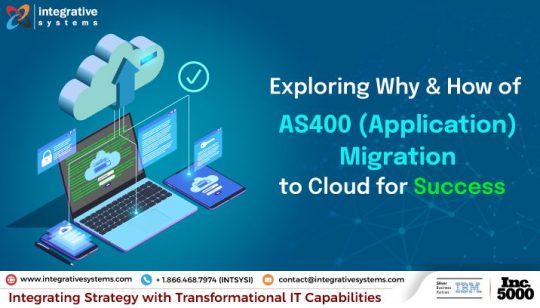
AS400 Migration to cloud empowers the AS400 application for all the physical audit compliances required. The security and availability features offered by cloud services are superior to those of on-premises servers.
Moving your AS400 to the cloud, you can save a significant amount in data canter operating costs. AS400 systems are reliable, stable, and used for heavy applications in industries like banking, insurance, retail, manufacturing, etc.
However, these on-premises servers require good maintenance and a team of AS400 experts, so many businesses opt for the AS400 migration to cloud approach. For the leaders, the migration process makes it easier to manage their IT applications and focus on other IT goals.
As AS400 is still considered one of the most reliable systems in use today, many businesses want to continue using AS400 systems. With constant updates, businesses can enhance their AS400 environment to improve performance, achieve high uptime, and strengthen security.
However, to reduce AS400 system complexity and costs, the best approach is AS400 Migration to Cloud. This will enable businesses to optimize their operations and take advantage of the benefits of the best cloud platforms.
AS400 Migration to Microsoft Azure and IBM Cloud
Microsoft Azure and IBM Cloud are the better cloud solutions of choice for AS400 users who want to protect their data on AS400 applications. Moving to Microsoft Azure, and IBM Cloud the benefits are immediate financially, operationally, and strategically.
There are many challenges faced in AS400 application systems. AS400 Migration to Azure, there are many industries have businesses may also want to migrate legacy applications and data to the cloud.
Migrating AS400 to the cloud can offer several benefits such as cost savings, improved functionality, and scalability. However, a successful migration process requires a strong strategy. If your legacy system wants to take advantage of newer, cutting-edge technologies, then you should consider migrating AS400 to cloud platforms like Microsoft azure and IBM cloud. Let's discuss more about this.
AS400 Migration to Azure
AS400 people migrate their as400 workload from on-premise environments to Microsoft Azure, so they can continue using the same data protection.
If you have plans to continue using your existing applications written in RPG, COBOL, and CL languages for the next few years, but at the same time, you want to move your workloads for AS400 Migration to Azure, there is an interesting solution available.
To make the applications compatible with Azure, they need to be converted to C and JAVA programming languages. Additionally, you are also free to modify the C and JAVA source code rather than the original legacy source code.
AS400 Migration to IBM Cloud
Migrating to IBM Cloud is a strategic move that can enhance the agility, scalability, and performance of your IT infrastructure. This process involves moving your data and applications from other systems to a dynamic cloud environment that offers the flexibility to scale resources on demand.
IBM Cloud provides advanced technologies, and robust security measures, and complies with industry standards, making it a safe and reliable choice for businesses. By embracing IBM Cloud, you can future-proof your business and adapt to changing landscapes in a digital-first era. This transformative journey is not just moving data. it's a leap toward a future-ready infrastructure that can propel your business to new heights.
AS400 Migration with Integrative Systems
Integrative Systems offers a comprehensive solution to seamlessly back up, recover, and migrate data for AS400 hosted on Azure cloud data centers. Our services make it effortless for businesses to backup, recover, and migrate data from their on-premises as400 systems to Microsoft Azure.
As we partner with Microsoft enables us to provide the confidence to run their most business-critical workloads on Azure, knowing that their data is reliably protected and easy to recover.
Our cloud experts support businesses in modernizing and migrating their workloads and applications to Microsoft Azure. Feel free to contact us at [email protected] for any cloud-related issues.
#as400 cloud#as400 cloud solutions#as400 migration to azure#as400 migration to cloud#as400 to cloud migration#as400 in the cloud#as400 in cloud#ibm cloud as400
0 notes
Text
RPG AS400 Development Services -An Incredibly Easy Method That Works For All
RPG AS400 (also known as IBM iSeries or IBM AS/400) is a popular platform for developing business applications. RPG (Report Program Generator) is a programming language used for developing applications on this platform. RPG AS400 development companies offer a range of solutions that include development, maintenance, and support for RPG applications.
Here are some easy steps to follow when seeking RPG AS400 development services:
Identify your requirements: Determine what your RPG AS400 application needs are, and what specific requirements you have for your business. This can help you find the right service provider that can meet your needs.
Look for a reliable service provider: Conduct research to identify a reliable and experienced service provider. Look for a company that has a strong reputation and has experience working with RPG AS400.
Check their expertise: Look for a service provider with expertise in RPG AS400 development, modernization, and migration. Ensure they have a team of skilled RPG developers who have experience with RPG IV, RPG Free Format, RPG/ILE, and RPG III.
Evaluate their communication and collaboration: Check how the service provider communicates and collaborates with their clients. Ensure they provide regular updates on project progress and have a transparent process for reporting issues or concerns.
Review their portfolio: Look at the service provider's portfolio to determine their experience with RPG AS400 development. Check for past projects that are similar to your requirements.
Consider their pricing: Evaluate the service provider's pricing structure and ensure it is transparent and affordable. Consider the value for money and ensure that the cost aligns with the quality of the services offered.
In Conclusion, when seeking RPG AS400 development services, it is important to identify your requirements, find a reliable service provider with expertise in RPG AS400, evaluate their communication and collaboration, review their portfolio, and consider their pricing. Following these steps will help you find the right service provider that can meet your needs and deliver quality solutions.
0 notes